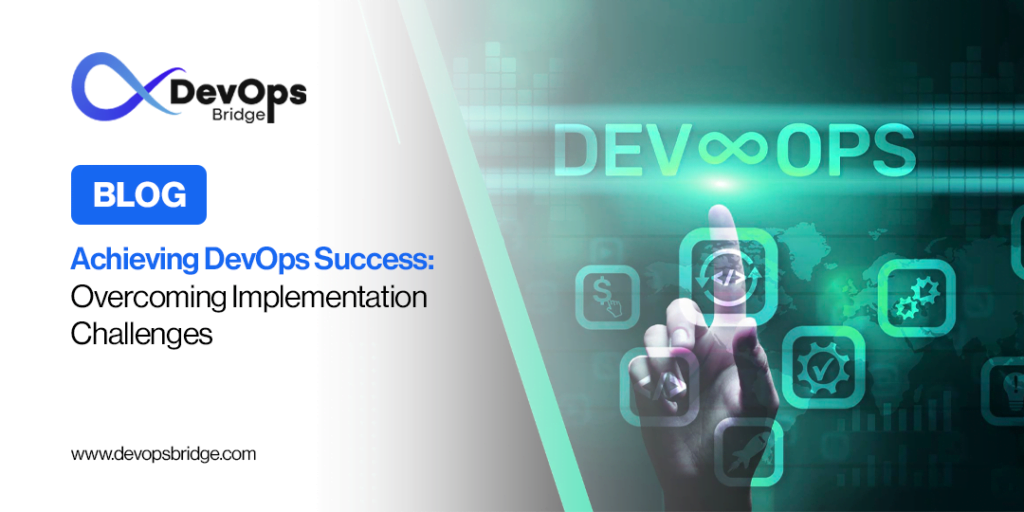
In the world of IT, DevOps has emerged as a transformative approach that bridges the gap between software development and IT operations. By fostering collaboration, automation, and continuous integration, DevOps promises to streamline processes, enhance product quality, and accelerate time-to-market. However, achieving DevOps success is not without its challenges. In this comprehensive guide, we delve into the key hurdles organizations face when implementing DevOps and provide actionable insights on how to overcome them.
Understanding DevOps and Its Significance
DevOps, a portmanteau of “development” and “operations,” represents a cultural and technical shift in organizations. It promotes collaboration, communication, and integration among cross-functional teams to deliver software more efficiently and reliably. The benefits of DevOps include:
- Faster Releases: DevOps enables organizations to release software updates more frequently and with greater reliability, reducing downtime and enhancing the user experience.
- Improved Collaboration: It fosters collaboration between development and operations teams, breaking down silos and promoting shared responsibility.
- Automated Processes: DevOps encourages the automation of repetitive tasks, reducing human errors and ensuring consistency in deployments.
- Enhanced Quality: With continuous testing and monitoring, DevOps helps identify and rectify issues early in the development cycle, leading to higher software quality.
DevOps Implementation Challenges
1. Resistance to Change
One of the most significant hurdles in DevOps adoption is resistance to change. Employees who are accustomed to traditional workflows may resist adopting DevOps practices. To address this challenge, organizations should:
- Create a Culture of Collaboration: Encourage open communication and teamwork, emphasizing the shared goal of delivering value to customers.
- Provide Training: Invest in training and upskilling programs to help employees acquire the necessary skills for DevOps.
2. Legacy Systems and Technical Debt
Legacy systems and technical debt can impede the transition to DevOps. These systems are often complex, monolithic, and difficult to automate. To mitigate this challenge:
- Identify Critical Components: Prioritize the modernization of critical components, gradually transitioning away from legacy systems.
- Implement Continuous Integration: Introduce CI/CD pipelines to automate testing and deployment, even within legacy environments.
3. Security Concerns
Ensuring the security of software throughout the DevOps pipeline is essential but can be challenging. Security must be integrated into every stage of development. Here’s how:
- Shift-Left Security: Incorporate security measures early in the development process, addressing vulnerabilities before they become major issues.
- Regular Security Audits: Conduct regular security audits and penetration testing to identify and rectify weaknesses.
4. Scalability and Resource Management
As organizations grow, managing infrastructure resources and ensuring scalability can become a challenge. To address this:
- Implement Infrastructure as Code (IaC): Utilize IaC tools to automate infrastructure provisioning, scaling, and management.
- Cloud Adoption: Consider leveraging cloud services for scalability and flexibility, reducing the burden on in-house infrastructure.
5. Lack of Visibility and Monitoring
Without proper visibility into the DevOps pipeline, it’s challenging to identify bottlenecks and areas for improvement. To improve visibility:
- Implement Monitoring Tools: Utilize monitoring and observability tools to track the performance of applications and infrastructure.
- Set Key Performance Indicators (KPIs): Define KPIs that measure the success of DevOps initiatives, allowing for continuous improvement.
6. Communication Gaps
Effective communication is at the core of successful DevOps implementation. However, communication gaps between development and operations teams can hinder progress. Here’s how to bridge those gaps:
- Cross-Functional Teams: Create cross-functional teams that include members from both development and operations. This promotes regular communication and collaboration.
- Use Collaboration Tools: Implement collaboration tools like Slack or Microsoft Teams to facilitate real-time communication and document sharing among team members.
7. Lack of Standardization
Standardization is crucial for Streamline DevOps workflow. When processes, tools, and configurations vary widely, it can lead to confusion and errors. To address this challenge:
- Define Standards: Clearly define and document standards for code, infrastructure, and deployment processes. Ensure that all team members adhere to these standards.
- Automation Templates: Utilize automation templates and scripts to enforce standard configurations, reducing the risk of inconsistencies.
8. Continuous Testing Challenges
Continuous testing is a cornerstone of DevOps, but it can be challenging to implement effectively. To overcome this challenge:
- Test Automation: Invest in test automation tools and frameworks to automate testing processes. This not only speeds up testing but also enhances accuracy.
- Shift-Right Testing: Implement shift-right testing, which involves testing in production environments with real-world data to identify issues earlier.
9. Compliance and Regulatory Issues
In industries with strict compliance and regulatory requirements, DevOps can pose unique challenges. Here’s how to navigate these issues:
- Automated Compliance Checks: Develop automated compliance checks to ensure that all code and deployments adhere to regulatory standards.
- Documentation and Audit Trails: Maintain detailed documentation and audit trails to demonstrate compliance to regulators and auditors.
10. DevOps Metrics and Measurement
Measuring the success of your DevOps initiatives is essential for continuous improvement. To address this challenge:
- Define Key Metrics: Clearly define key performance indicators (KPIs) that align with your DevOps goals. These might include deployment frequency, lead time, and mean time to recovery (MTTR).
- Regular Assessment: Regularly assess and analyze these metrics to identify areas for improvement and track progress.
By proactively addressing these challenges and implementing the suggested strategies, your organization will not only enhance its DevOps capabilities but also establish itself as a leader in the field. Remember, DevOps is an ongoing journey, and continuous improvement is key to maintaining a competitive edge in the ever-evolving technology landscape
Conclusion
In conclusion, DevOps is a powerful methodology that can drive significant improvements in software development and operations. However, overcoming implementation challenges is crucial to realizing its full potential. By addressing resistance to change, modernizing legacy systems, prioritizing security, optimizing resource management, and enhancing visibility, organizations can navigate the path to DevOps success.
Contact DevOps Bridge to embrace DevOps as a cultural shift, and your organization will not only outrank competitors in the digital landscape but also deliver exceptional value to your customers.

